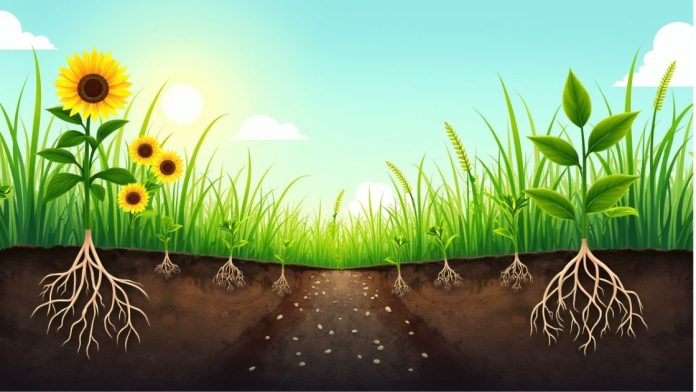We’ve all heard the phrase “let nature take its course,” but what if nature itself could actively clean up our mess? Imagine polluted lands and toxic water bodies being revived—not by heavy machinery or chemicals, but by plants. That’s the magic of phytoremediation.
In a world increasingly burdened by industrial waste, oil spills, heavy metals, and chemical runoffs, scientists and environmentalists are turning to nature’s quiet heroes—plants—for solutions. This method not only restores balance but does so in a way that’s gentle, cost-effective, and sustainable.
Let’s dig deep (pun intended!) into how phytoremediation works, its powerful techniques, and how you can even be part of the green revolution.
What Is Phytoremediation?
At its core, phytoremediation is the use of plants to clean up soil, air, and water contaminated with hazardous contaminants. It’s a nature-based solution that leverages the biological processes of specific plants to absorb, degrade, contain, or immobilize pollutants.
From ancient mustard plants that suck up heavy metals, to sunflowers that remove radioactive elements, phytoremediation techniques are rooted (literally) in biology and guided by environmental scienceWhy Should We Care?
Environmental degradation isn’t just a distant problem in some polluted city—it’s something that affects our food, water, air, and future. Traditional remediation methods are often expensive, disruptive, and energy-intensive. Phytoremediation, on the other hand, offers:
-
✅ A low-cost alternative
-
✅ Minimal disturbance to the ecosystem
-
✅ Carbon sequestration (bonus points for climate action!)
-
✅ Beauty—green spaces instead of gray wastelands
This is nature doing what it does best, with a little scientific guidance.
Types of Phytoremediation Techniques
Let’s break down the most common and effective techniques used in phytoremediation today:
1. Phytoextraction (or Phytoaccumulation)
Certain plants—called hyperaccumulators—absorb heavy metals like lead, cadmium, or arsenic from the soil through their roots. These contaminants are stored in their shoots or leaves, which are then harvested and safely disposed of.
Best plants: Indian mustard, willow, sunflower
2. Phytodegradation (or Phytotransformation)
Plants can actually break down organic pollutants like pesticides, solvents, or petroleum products into harmless components through metabolic processes.
Best plants: Poplar trees, alfalfa, hybrid willows
3. Phytostabilization
Instead of removing pollutants, some plants help by immobilizing them in the soil, preventing their movement and spread. This is especially useful for toxic metals and mining waste.
Best plants: Vetiver grass, buffalo grass
4. Rhizofiltration
Used mostly for water treatment, this technique involves using plant roots to absorb or filter contaminants out of water, especially heavy metals and radioactive materials.
Best plants: Water hyacinth, Indian mustard, spinach
5. Phytovolatilization
Some plants can take up waterborne pollutants and release them into the air in a less harmful form through transpiration. It sounds odd, but it’s been shown effective for mercury and selenium.
Best plants: Poplar, Indian mustard, cottonwood
Real-World Applications of Phytoremediation
Phytoremediation isn’t just a lab experiment. It’s happening around the world:
-
🌆 Brownfield redevelopment: Cities like Detroit and Chicago are using sunflowers and poplars to reclaim abandoned industrial zones.
-
☢️ Chernobyl & Fukushima: Sunflowers have been used to remove radioactive isotopes from contaminated water.
-
🛢️ Oil spill sites: Alfalfa and clover are planted in areas affected by petroleum leaks to break down hydrocarbons.
These are just a few examples of how plants are literally saving lives and regenerating ecosystems.
Actionable Tips: How You Can Get Involved
You don’t have to be a scientist to join the phytoremediation movement. Here’s how to take action:
🌼 1. Plant Smart
Grow native plants known for pollutant absorption if you live near industrial areas or highways. Sunflowers, willows, and certain grasses are easy to grow and beautiful to look at.
🏡 2. Create a Rain Garden
Rain gardens can help filter out pollutants from stormwater runoff in your yard, preventing them from entering rivers or lakes.
📚 3. Educate Your Community
Organize local clean-up events or workshops focused on eco-friendly remediation strategies. Share stories of successful phytoremediation in your town or region.
🧪 4. Collaborate with Schools or NGOs
Schools can start phytoremediation projects as part of science or environmental clubs. NGOs working in urban renewal or farming can integrate this method into their plans.
FAQs About Phytoremediation
Q1: Is phytoremediation safe for the environment?
Absolutely. It’s one of the most environmentally friendly ways to address pollution without introducing new chemicals.
Q2: Can phytoremediation work for all pollutants?
Not quite. It’s most effective for organic compounds and heavy metals, but less so for highly toxic or persistent pollutants like PCBs or dioxins.
Q3: How long does phytoremediation take?
It can take several months to several years, depending on the level and type of contamination, plant species used, and environmental conditions.
Q4: Can I grow these plants in my garden?
Yes, many phytoremediative plants can thrive in gardens. But be cautious—don’t compost or consume plants used to clean up toxins.
Q5: Is it cost-effective?
Yes. Phytoremediation is often 10–50% cheaper than conventional methods, especially for large-scale projects.
Conclusion
Phytoremediation isn’t just science—it’s a reminder of the quiet power of nature. It teaches us that healing doesn’t always require force; sometimes, it simply takes time, sunlight, roots, and a little faith.
As we look to create a greener, more sustainable world, this nature-based solution offers a path forward—one that’s gentle, beautiful, and profoundly effective.How do you balance learning about new sustainability practices like phytoremediation with your busy schedule? Have any time management tips or tools that keep you motivated?
👇 Share your strategies in the comments. Let’s grow this conversation—and a cleaner planet—together.

